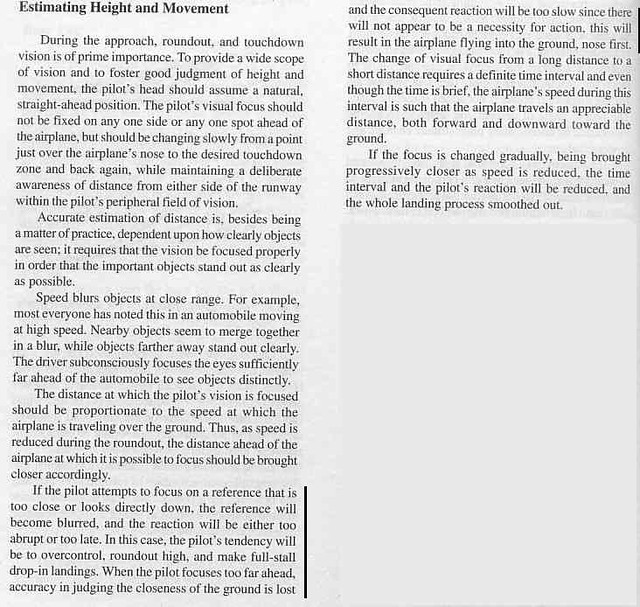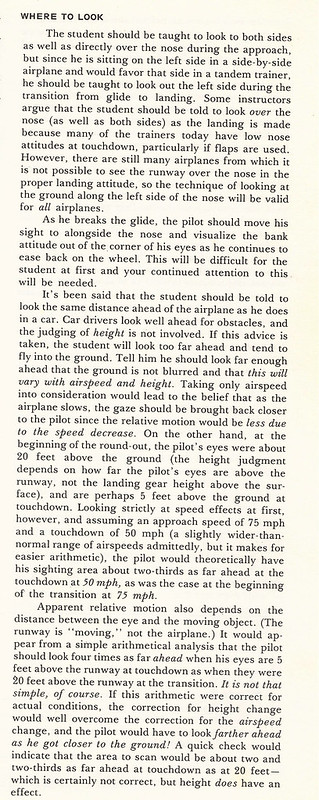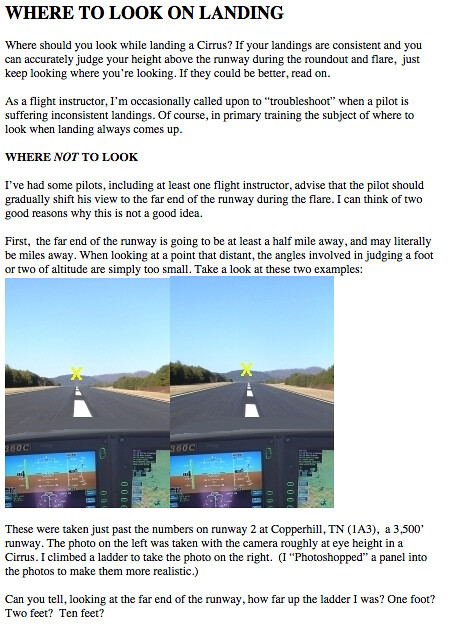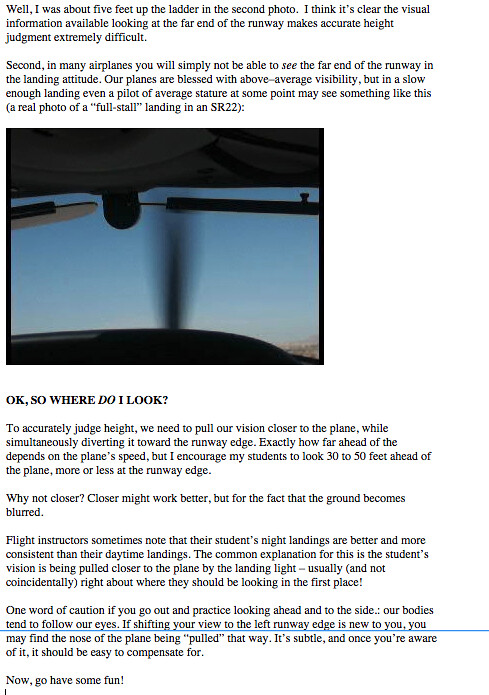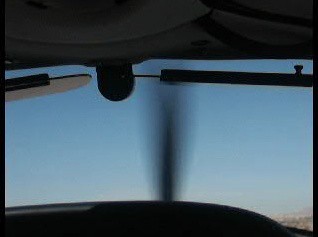I am a student pilot struggling with consistently landing the airplane so I thought I would attempt to obtain a fresh/different view of what I am doing vs what I should be doing. First, basic info, plane Piper Archer, v speeds 85 downwind, 75 base, 65 final - patern altitude 1800.
I seem to be able to consistently "fly the plane to the numbers" - generally it does not seem that I have to make at lot of pitch adjustments on final - I would describe the final as "a gentle glide to the numbers" with minimal pitch adjustments and gradual power reductions. Question 1 on a normal day (not windy) what speed should I cross threshold? Should I maintain 65 knots on final or should I be slowing slightly and crossing closer to 60 knots? Should I have much
, if any, power crossing the threshold or should the airplane be at idle? If I am fast on final, is it OK to "pitch up" slightly (i.e. reduce the decent rate) slow up and then regain the proper glide slope? "Pitch for speed power for altitude"???, but I have been told to "maintain the glide slope on final!!!". If I have the proper decent angle and power settings no "pitch" adjustment is necessary.
Assuming I manage to level out at about 10 feet (that doesn't always happen lol) while focusing down the runway to "see the picture" what is the picture? Generally, I have attempted to keep the "nose the on the end of the runway", appling back pressure as the plane slows and sinks. All too often during this process I either ballon slightly or land hard. Is the hard landing the result of being to slow - that is lift was lost too quickly and the plane "dropped"? Or, is it the result of leveling off too high and being too aggressive with back pressure? If the plane balloons slightly should I add a touch of power and continue or is this an automatic go around? Are these problems compounded by the fact that generally to fly 65 knots over the threshold I have the plane at idle? Perhaps, I am looking too far down the runway, if so where should I focus and what picture am I trying to see and maintain? If I cross the threshold to fast, say closer to 70 knots (landing on a 5,000 foot plus runway), is there no way to safely land further down the runway? In other words, I recognize that the airplane will float further but shouldn't the same basic landing sequence work, just take longer? If I make a speed mistake, isn't slightly fast better than to slow?
I know that these issues have been discussed at length here and on other forums, I have read most of them so I apologize for asking the "same old question" . However, it is unclear to me what it is that I am doing incorrectly - obviously I am confused and lost. Continuing to practice "seeing the picture" with no clear idea of what I am looking for and why, doesn't seem to be a very good plan. I am hoping that the experiences of other pilots and what may have assisted them can help me "see landing" for an alternatIive point of view.
I seem to be able to consistently "fly the plane to the numbers" - generally it does not seem that I have to make at lot of pitch adjustments on final - I would describe the final as "a gentle glide to the numbers" with minimal pitch adjustments and gradual power reductions. Question 1 on a normal day (not windy) what speed should I cross threshold? Should I maintain 65 knots on final or should I be slowing slightly and crossing closer to 60 knots? Should I have much
, if any, power crossing the threshold or should the airplane be at idle? If I am fast on final, is it OK to "pitch up" slightly (i.e. reduce the decent rate) slow up and then regain the proper glide slope? "Pitch for speed power for altitude"???, but I have been told to "maintain the glide slope on final!!!". If I have the proper decent angle and power settings no "pitch" adjustment is necessary.
Assuming I manage to level out at about 10 feet (that doesn't always happen lol) while focusing down the runway to "see the picture" what is the picture? Generally, I have attempted to keep the "nose the on the end of the runway", appling back pressure as the plane slows and sinks. All too often during this process I either ballon slightly or land hard. Is the hard landing the result of being to slow - that is lift was lost too quickly and the plane "dropped"? Or, is it the result of leveling off too high and being too aggressive with back pressure? If the plane balloons slightly should I add a touch of power and continue or is this an automatic go around? Are these problems compounded by the fact that generally to fly 65 knots over the threshold I have the plane at idle? Perhaps, I am looking too far down the runway, if so where should I focus and what picture am I trying to see and maintain? If I cross the threshold to fast, say closer to 70 knots (landing on a 5,000 foot plus runway), is there no way to safely land further down the runway? In other words, I recognize that the airplane will float further but shouldn't the same basic landing sequence work, just take longer? If I make a speed mistake, isn't slightly fast better than to slow?
I know that these issues have been discussed at length here and on other forums, I have read most of them so I apologize for asking the "same old question" . However, it is unclear to me what it is that I am doing incorrectly - obviously I am confused and lost. Continuing to practice "seeing the picture" with no clear idea of what I am looking for and why, doesn't seem to be a very good plan. I am hoping that the experiences of other pilots and what may have assisted them can help me "see landing" for an alternatIive point of view.

